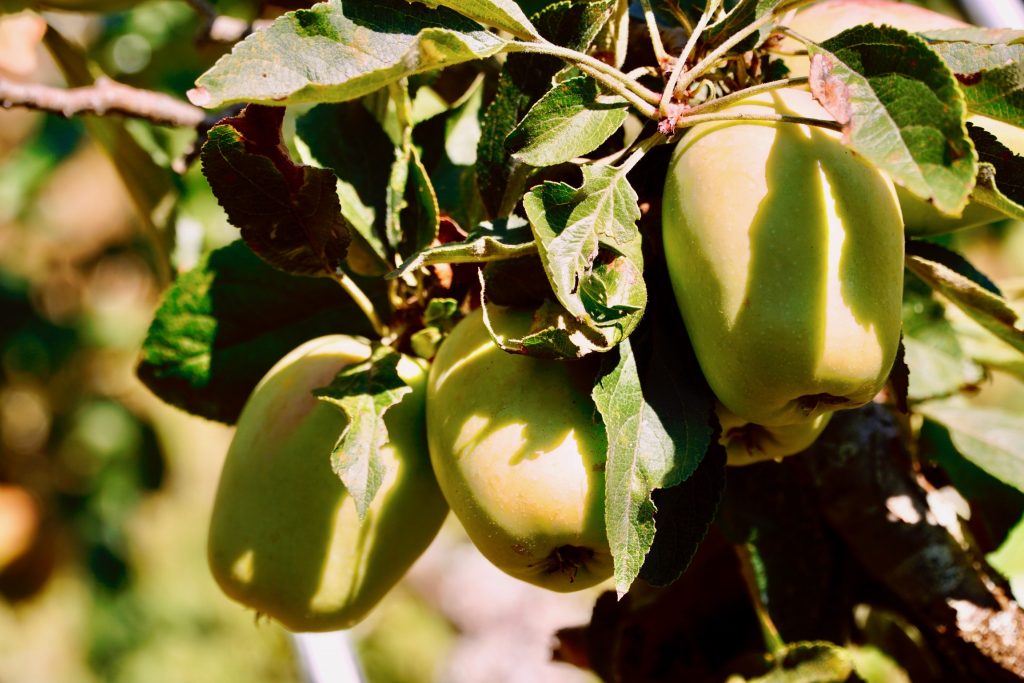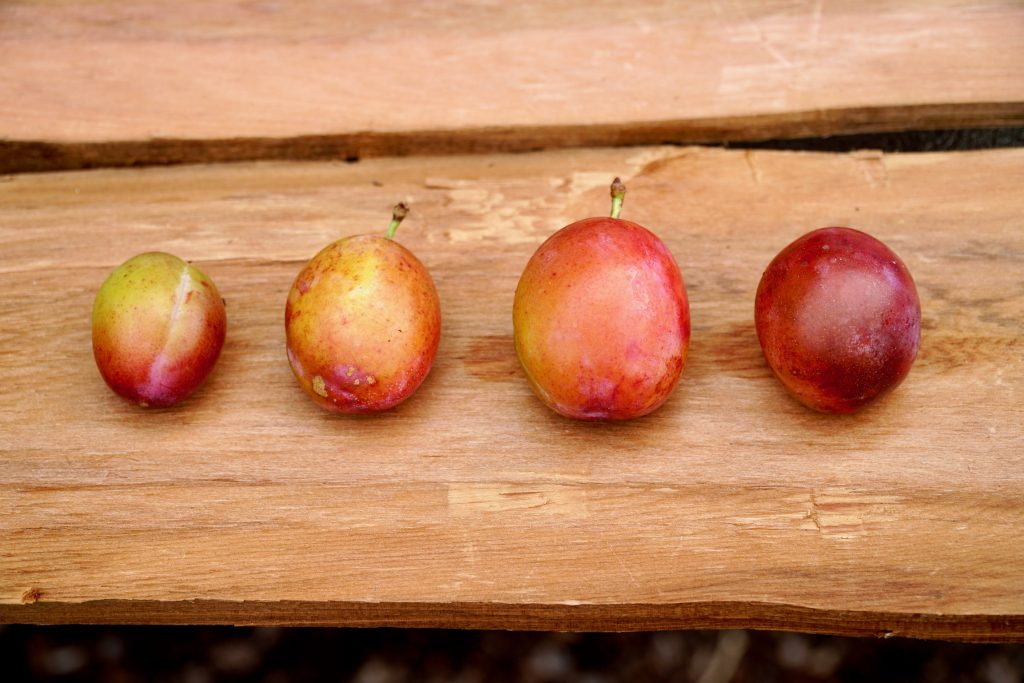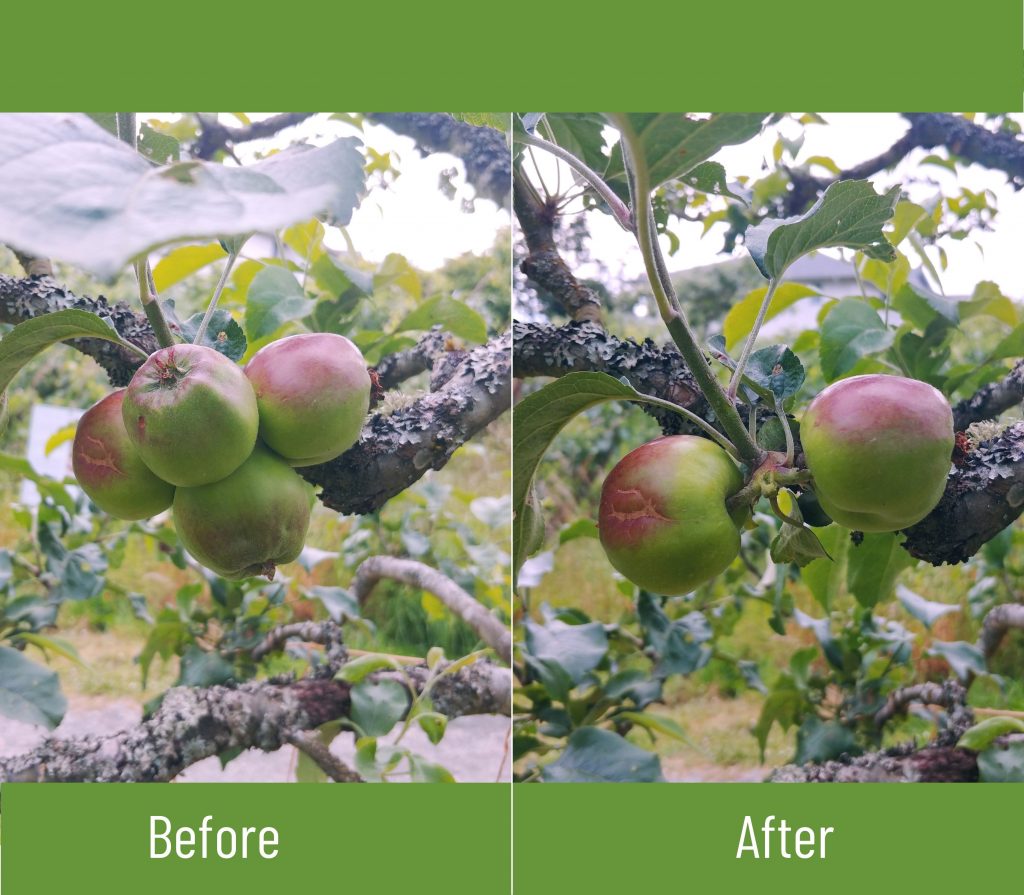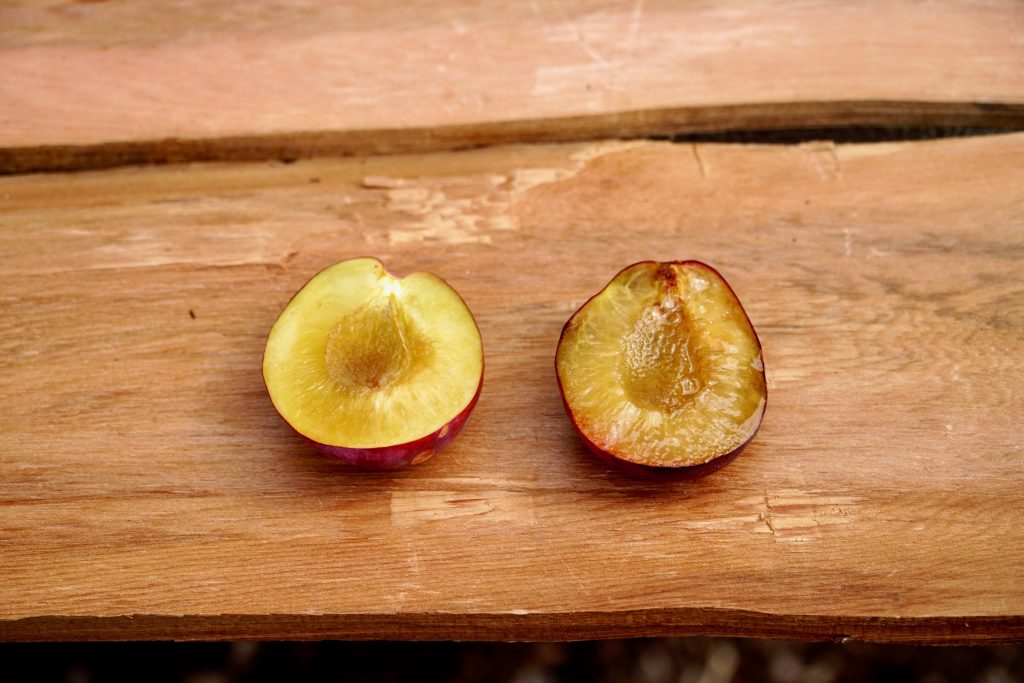
Fruit thinning
Why is my fruit dropping?
Did you know that falling fruit is probably nothing to worry about? In fact, fruit thinning is a practice that your tree not only experiences naturally (a phenomenon commonly referred to as June Drop) but it’s also something we recommend you perform as annual fruit tree maintenance to ensure a healthy harvest.
If you notice unripe fruitlets littering the ground beneath your tree or have noticed fruitlets disappearing from your branches, have no fear. Your fruit tree is just performing the perfectly natural act of fruit thinning.

What is June drop?
It’s June and unripe fruitlets might be littering the ground underneath your tree. Or perhaps you’ve noticed that your branches boast an abundance of fruitlets one day but significantly less the next. What gives? Well, this is why we don’t count our fruit before it’s ripe–June drop is here. And it’s a perfectly normal thing for your fruit tree to let a few not-quite-right fruit drop off.
June drop refers to the tendency for fruit trees to drop immature fruit in the spring (this occurs about a month after peak bloom, usually sometime in June… hence the name). Mother Nature knows best, and June drop is the result of your tree knowing what fruit to keep and what fruit to drop. By casting off feebler and under-fertilized fruitlets, your tree is able to direct more energy to the seedier, more promising fruits.
Prevalent in both pome and stone fruit trees, the only symptom of June drop is small, immature fruit falling off trees. You may worry that your tree is shedding valuable fruits, but that isn’t the case. In fact, June drop is a healthy biological response and shows that your tree is conducting a valuable internal inventory by shedding under-pollinated and damaged fruitlets!
If you suspect inadequate pollination might be the major culprit for your June drop, consider upping the instance of native pollinators in your garden or adding a pollinator partner by planting or grafting a compatible variety.
June drop is a perfectly natural thinning process. The main goal of fruit thinning is to further concentrate your tree’s energy into growing fewer, but larger and sweeter fruits. This also protects your tree by relieving overburdened branches from the chance of breaking from an abundance of ripening fruit.
June drop can help you predict your harvest, but it is also an excellent indicator of your tree’s overall health so it’s good to pay attention and keep some sort of record (consider taking reference photos to identify patterns over the years). June drop can also tell you if your tree is lacking pollination and help you identify the biennial cycle (helpful if you’ve inherited a fruit tree and aren’t totally aware of its full history).

Thin-it-yourself fruit tree tips
After your tree’s natural thinning process, it’s a good time to take stock of the remaining fruitlets. Take an inventory of your fruit. How many plums or apples are in a cluster? How large is your fruit when it ripens? Will it have enough room to grow?
We recommend you thin your fruit by hand by removing fruit from tight clusters, allowing the remaining fruit to mature into a large delicious apple, pear, or plum. Where fruitlets are tightly clustered, remove some to provide enough room for each promising fruit to ripen. If you don’t do this, eventually the fruits will enlarge and push each other off which is a waste of your tree’s valuable energy and can confuse people into thinking the fruit is ripe.
First, remove the fruitlets that are obviously damaged by birds, bugs or scab. Next, discard the fruitlets that are smaller than average (these have been under-pollinated and will be discarded by your tree anyway).
When removing fruitlets do not pull them off. Snip them using a pair of clean garden shears. Aim to leave the strongest and best-shaped fruit on the branch to ripen.

Stop! Falling fruit does not = ripe fruit
Just because your fruit is dropping doesn’t mean it’s ripe. We repeat: falling fruit is not an indicator that your fruit is ripe! Especially for fruits like apples or pears, that don’t ripen until much, much later in the season, don’t take falling fruit as any sort of indication that fruit is ripe for the picking.
When trees are not manually thinned, fruit can drop prematurely (when these tight clusters ripen and push unripe fruit from the branches) tricking you into thinking fruit is ripe when it is not.
Another culprit for prematurely falling fruit is pesky coddling moth. This pest is known to bore into fruitlets and eat the soft seeds, ruining the fruit. Because the fruit is no longer viable, your tree will drop it.
There are much better ways to determine whether your fruit is ripe, like tasting it or cutting it open to check out the colour of the seeds. And while apples, pears, and plums do ripen after picking, this won’t occur if you pick them too soon so it’s crucial to harvest fruit at the right time.
Don’t let good fruit go bad
Even with June drop and manual thinning, you might have way more fruit than you could ever harvest or eat! If you think you’re in for an overabundance this harvest, consider registering your tree for The Fruit Tree Project! This volunteer-run program picks, sorts, and helps distribute your fruit into the community. Learn more.